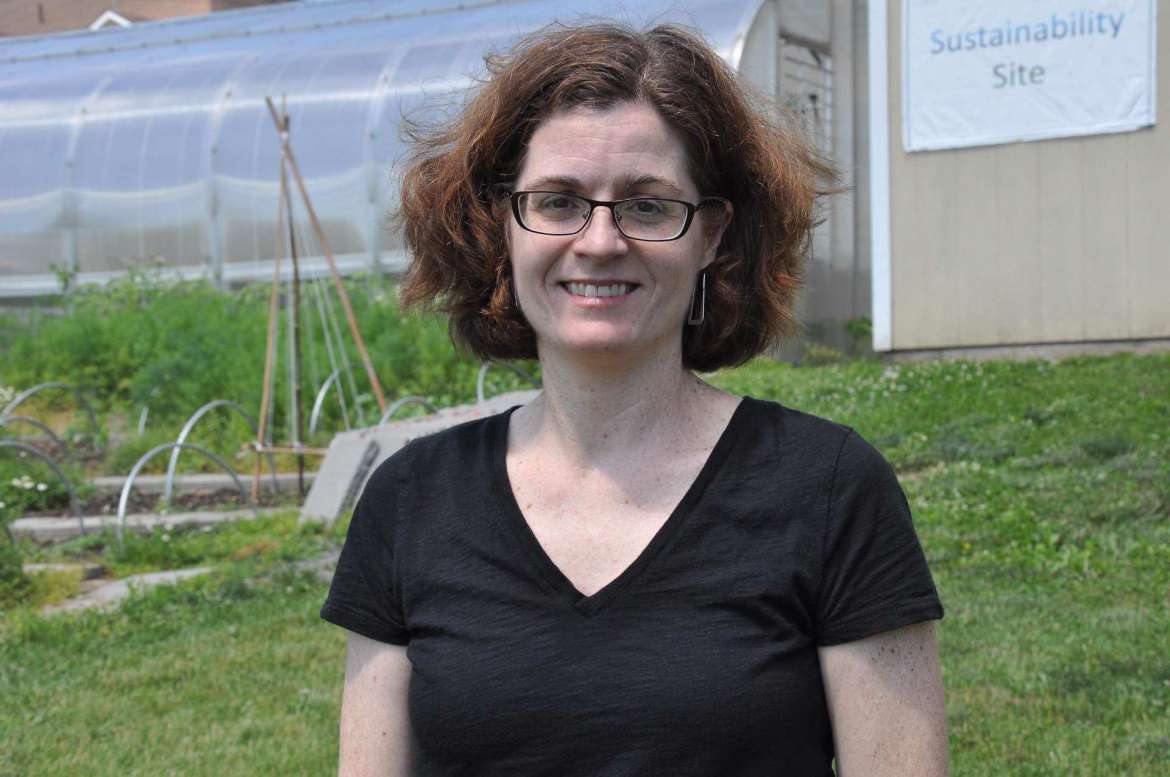 A paper senior-authored by a Shepherd University professor was published in the April 22 issue of the Entomological Society of America’s journal “Environmental Entomology.” “Comparison of Peach Cultivars for Provision of Extrafloral Nectar Resources to Harmonia axyridis (Coleoptera: Coccinellidae)” by Dr. Clarissa Mathews, chair of Shepherd’s Institute of Environmental and Physical Sciences, Mark W. Brown, and Felix L. Wackers explores whether special glands on peach trees that produce nectar help keep beneficial bugs in orchards.
A paper senior-authored by a Shepherd University professor was published in the April 22 issue of the Entomological Society of America’s journal “Environmental Entomology.” “Comparison of Peach Cultivars for Provision of Extrafloral Nectar Resources to Harmonia axyridis (Coleoptera: Coccinellidae)” by Dr. Clarissa Mathews, chair of Shepherd’s Institute of Environmental and Physical Sciences, Mark W. Brown, and Felix L. Wackers explores whether special glands on peach trees that produce nectar help keep beneficial bugs in orchards.
Funded through a $225,000 grant from the United States Department of Agriculture National Research Initiative, the research was a collaboration between the USDA Appalachian Tree Fruit Research Station in Kearneysville and Shepherd. About a quarter of the grant paid for research done by Mathews and students at Shepherd.
Mathews said some varieties of peach trees have extra floral nectaries, which are glands on their leaves that produce nectar. The research looked at why the trees produce the extra nectar and how it impacts beneficial bugs that are found in orchards.
“We collected the nectar from the leaves, which was a very laborious process of tapping the leaf over and over with a little capillary tube to suck up that nectar,” Mathews said. “We then fed the nectar to ladybird beetles, or ladybugs, in the laboratory and watched how that affected them. We looked at how long they lived when they received nectar versus when they didn’t receive the nectar, and we looked at what we call fecundity, or reproductive rates.”
Mathews said ladybugs are beneficial in orchards because they are excellent predators that eat a variety of pests like aphids, which are a main food source for ladybugs.
“When we didn’t provide them the aphids but we provided them the nectar, they could be sustained for three or four days with nectar alone,” Mathews said. “That means if they’re out in the orchard and they’re not finding the bad bugs to eat, they will remain in that orchard and feed on the nectar until the pests arrive, which is really good for what we call biological control. It means they would stay in the orchard and help us by eating the bad bugs. The nectar is a good supplementary food source to keep ladybugs in the ecosystem.”
Mathews said the research also found the ladybugs lived longer and had more offspring when they ate the nectar. She said the nectar glands attract other good bugs as well, like ants and parasitic wasps.
“The nectar feeds all these good bugs and in turn the good bugs attack the pests,” Mathews said. “So the trees with the nectar glands actually experienced less feeding damage. They’re getting protected.”
Mathews said this is one of the first examinations of extra floral nectary glands in orchard crops and how they impact beneficial insects and the pests.
“The great thing is we’re getting the news out about the good bugs and how effective they can be if we’re not killing them with insecticides and how we can improve our orchards,” she said.
The extra floral nectary glands are not present in all varieties of peaches because the breeding process has eliminated them in some varieties. Matthews said the study used Lovell peaches, but other old-time varieties that have the glands include Redhaven, John Boy, and Garnet Beauty.
She said one strategy for cutting down on the amount of pesticides needed to keep an orchard healthy is to plant varieties with the glands next to those without them. Mathews said they are still studying how many peach trees are needed to give protection to apples, which don’t have the glands at all.